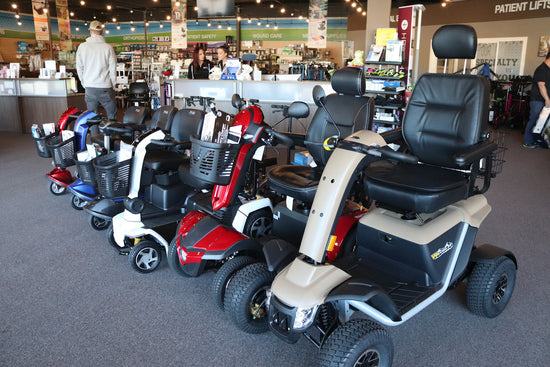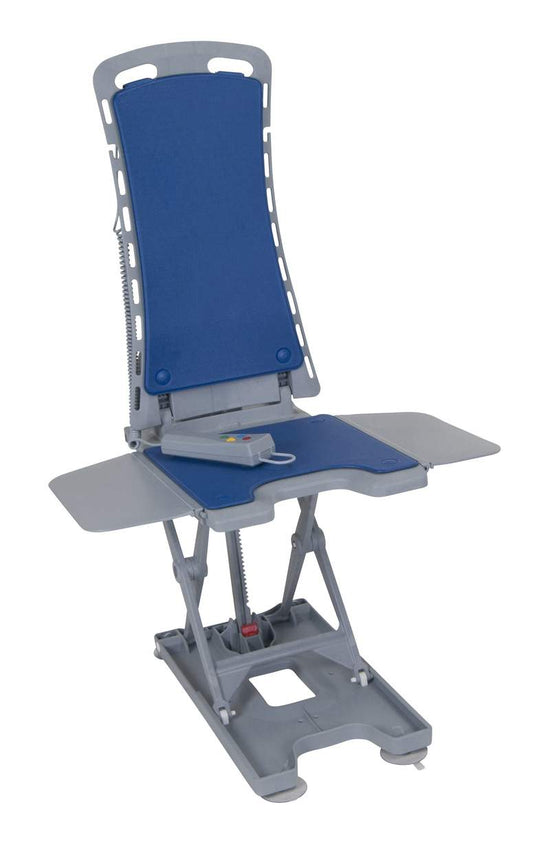Choosing the right wheelchair can be a life-changing decision for people with disabilities or the elderly. With so many different types available today, each designed to meet unique mobility, comfort, and lifestyle needs, it's important to understand your options fully before making a choice.
Whether you're exploring mobility aids for yourself or a loved one, this comprehensive guide will break down the essentials you need to know. From manual chairs to power options and specialized models, we’ll help you navigate the features, benefits, and ideal use cases for each type of wheelchair. The goal is to empower you with the information necessary to make the most informed, practical, and supportive decision.
Manual Wheelchairs: Features, Benefits, and Ideal Users
Manual wheelchairs are among the most commonly used mobility aids, valued for their simplicity, affordability, and reliability. These wheelchairs are powered by the user or an attendant through large rear wheels that allow self-propulsion. They come in various frame materials, including steel, aluminum, and titanium, each affecting the chair's weight and durability.
For individuals with sufficient upper body strength or those with a caregiver to assist, manual wheelchairs offer a flexible and cost-effective solution. They are ideal for short-term recovery, occasional use, or for those who prefer more control over their movement. Foldable designs make them easy to transport and store, which is especially helpful for users who travel or move between locations frequently.
Some manual models include customizable features such as adjustable seat height, backrests, and armrests. These features enhance comfort and can reduce the risk of strain or pressure injuries during extended use. The absence of batteries or motors also means less maintenance and no dependency on power sources.
However, they may not be suitable for users with limited strength or stamina, particularly for long distances. In those cases, exploring powered or hybrid options may be more appropriate. Ultimately, a manual wheelchair can be an empowering tool for independent mobility when chosen based on physical ability and lifestyle needs.
Power Wheelchairs: Key Functions and Considerations
Power wheelchairs are designed for individuals who require greater support and reduced physical effort to move. These wheelchairs are battery-operated and controlled via a joystick, making them especially suitable for users with limited upper body strength or coordination.
One of the primary advantages of power wheelchairs is the enhanced independence they offer. Users can maneuver easily across various terrains and inclines without exhausting themselves. Modern models include features like programmable controls, reclining functions, and even elevation mechanisms that allow users to raise the seat height for improved accessibility.
These wheelchairs come in different drive types: rear-wheel, mid-wheel, and front-wheel drive, each offering different levels of maneuverability and terrain handling. Rear-wheel drives provide stability and speed, while mid-wheel drives are excellent for tight indoor spaces. Front-wheel drives offer better traction for outdoor use.
Although power wheelchairs provide superior comfort and mobility, they do come with higher costs and require regular battery charging and occasional servicing. Transportation may also be a concern, as these models are heavier and often require accessible vehicles or lifts.
For elderly individuals or people with disabilities who need consistent, reliable mobility support, a power wheelchair can be a transformative investment in independence and quality of life.
Transport Wheelchairs: When and Why to Use Them
Transport wheelchairs are lightweight, compact chairs designed primarily for short-term use and portability. Unlike standard manual wheelchairs, these models do not allow for self-propulsion and must be pushed by a caregiver or companion. This makes them ideal for medical appointments, short outings, or travel scenarios where mobility assistance is needed temporarily.
Key reasons to choose a transport wheelchair include:
- Lightweight frames: Often made from aluminum, making them easy to lift and fold.
- Compact design: Suitable for narrow doorways and tight indoor spaces.
- Ease of use: Simple folding mechanism for quick storage in vehicles.
- Temporary or intermittent use: Great for those recovering from surgery or needing mobility support for specific occasions.
Because they are not intended for long-term sitting or independent use, transport wheelchairs typically feature basic padding and limited customization options. While this can be a limitation for some users, it also keeps costs low and simplifies operation for caregivers.
For elderly users who can walk short distances but require support for longer trips, or for those with a temporary need, transport wheelchairs offer an excellent balance of convenience and functionality. They serve as a practical, short-term mobility solution without the commitment required for more complex wheelchair types.
Lightweight and Ultra-Lightweight Wheelchairs: Enhancing Daily Use
Lightweight and ultra-lightweight wheelchairs are ideal for individuals who need a mobility solution that is easy to maneuver and transport. These chairs are typically constructed from high-strength aluminum or titanium, which reduces overall weight without sacrificing durability.
Designed for frequent use, these wheelchairs offer excellent portability, making them perfect for active users who value independence. The reduced weight not only makes them easier to push but also helps prevent shoulder and joint strain over time. For users who need to load their wheelchair into a car or travel frequently, this feature is especially valuable.
Despite their lightweight construction, these models do not skimp on functionality. Many offer adjustable seating, removable armrests, and quick-release wheels for added customization and ease of maintenance. Some ultra-lightweight models are designed for performance, giving users more responsive handling and better control over their movements.
These wheelchairs are best suited for individuals who can propel themselves and want to maximize comfort and efficiency in their day-to-day lives. While they may be more expensive than standard manual models, the long-term benefits of reduced physical strain and increased mobility can make them a worthwhile investment for many users.
Reclining and Tilt-in-Space Wheelchairs: Maximizing Comfort
For users who spend extended periods in a wheelchair, comfort and posture support become critical. Reclining and tilt-in-space wheelchairs are specifically designed to address these needs by offering enhanced seating positions and pressure relief.
Here are the main benefits of these wheelchair types:
- Pressure relief: Redistributes weight to prevent pressure sores, especially important for users with limited mobility.
- Improved posture: Maintains spinal alignment and reduces the risk of back strain or muscle fatigue.
- Circulation support: Reclining and tilting can enhance blood flow, reducing the risk of complications.
- Caregiver assistance: Easier for caregivers to reposition users without physical strain.
- Therapeutic use: Often recommended by healthcare professionals for users with specific medical needs.
Reclining wheelchairs allow the backrest to tilt backward independently, while tilt-in-space models rotate the entire seating system to maintain posture and prevent sliding. Both designs are beneficial for users with severe mobility impairments, neurological conditions, or chronic pain.
These wheelchairs are often used in home care or clinical settings, where the user's comfort and health outcomes are top priorities. While bulkier and generally more expensive, their ability to support long-term health makes them a critical tool for many individuals with complex mobility needs.
Sports and Custom Wheelchairs: Designed for Active Lifestyles
Sports and custom wheelchairs are specialized mobility devices engineered to meet the performance demands of active users. Whether for competitive athletics or recreational use, these chairs offer enhanced mobility, responsiveness, and ergonomic support tailored to individual goals and body mechanics.
Unlike standard wheelchairs, sports models feature rigid frames, angled wheels, and lightweight materials to optimize speed, agility, and stability. They’re commonly used in sports like basketball, tennis, and racing, where precise control and fast response times are essential.
Customization goes beyond just sports. Users can work with specialists to design a chair that fits their specific body measurements, postural needs, and lifestyle requirements. Features may include:
- Custom seat sizing and support systems
- Specialized wheel camber for maneuverability
- High-performance materials like carbon fiber
- Personalized accessories and add-ons
- Vibration damping or shock-absorbing components
These wheelchairs often represent a significant investment, but for users pursuing independence, mobility, and an active lifestyle, the benefits are profound. They allow individuals with disabilities to engage fully in physical activity, fostering confidence, social inclusion, and overall well-being.
If you or a loved one are exploring your mobility options and want expert guidance in choosing the right wheelchair, look no further than Everything Medical. As a trusted provider of home medical equipment and supplies in Redding, California, Everything Medical offers a wide range of wheelchair types, accessories, and personalized support to help meet your unique needs. Visit their store or contact their knowledgeable team to find the best mobility solution tailored just for you.
Your journey to better mobility starts with the right partner—trust Everything Medical in Redding, California.




